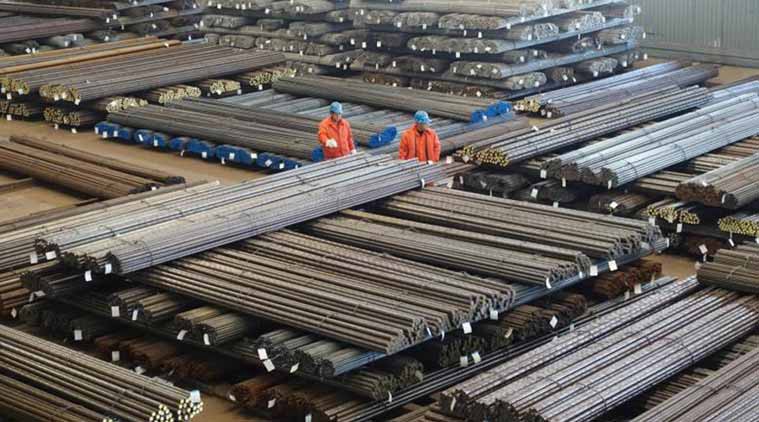The steel rebar industry plays a crucial role in the construction sector by supplying reinforcement bars made of steel that are used to strengthen and support concrete structures. Rebar stands for “reinforcing bar,” and it is an essential component in many construction projects, particularly in buildings, bridges, highways, and other infrastructure. The Steel Rebar Market was estimated at around USD 224.5 billion in 2022, with a projected growth to USD 317.4 billion by 2030, showcasing a compound annual growth rate (CAGR) of 4.4%.
Browse 275 market data Tables and 56 Figures spread through 266 Pages and in-depth TOC on “Steel Rebar Market by Type (Deformed and Mild), Coating Type (Plain Carbon Steel Rebar, Galvanized Steel Rebar, Epoxy-Coated Steel Rebar), Process Type, Bar Size, End-use (Infrastructure, Housing, and Industrial) and Region – Global Forecast to 2030”
Download PDF Brochure: https://www.marketsandmarkets.com/pdfdownloadNew.asp?id=176200687
Here’s an overview of the steel rebar industry and its demand in the construction sector:
- Purpose: Steel rebar is primarily used to reinforce concrete structures, making them more robust and durable. Concrete has excellent compressive strength but is relatively weak in tension. By adding steel rebar, construction professionals can create reinforced concrete structures that are better equipped to handle tensile forces, such as those caused by bending or stretching.
- Types of Steel Rebar: There are various types of steel rebar available, each designed for specific construction needs. Common types include:
- Mild Steel Rebar: Used in most general construction projects.
- Deformed Steel Rebar: Has surface ridges or deformations to improve its bond with concrete.
- Epoxy-Coated Rebar: Coated with epoxy to resist corrosion, often used in corrosive environments.
- Stainless Steel Rebar: Resistant to corrosion and used in projects where durability is a significant concern.

- Demand in Construction: The demand for steel rebar in the construction sector is closely tied to the overall health of the construction industry. Several factors influence this demand:
- Economic Growth: Economic growth and development lead to increased construction activity, driving up the demand for steel rebar.
- Infrastructure Projects: Large-scale infrastructure projects, such as roads, bridges, and airports, require substantial quantities of steel rebar.
- Urbanization: As more people move to urban areas, there is a need for new buildings and infrastructure, further increasing demand.
- Maintenance and Renovation: Even existing structures may require reinforcement or renovation, which can boost rebar demand.
- Regulations: Building codes and safety regulations often require the use of steel rebar in construction, ensuring ongoing demand.
Inquire Before Buying: https://www.marketsandmarkets.com/Enquiry_Before_BuyingNew.asp?id=176200687
- Global Demand: The demand for steel rebar varies by region and is influenced by regional economic trends and construction needs. Developing countries with rapid urbanization often have substantial demand for rebar due to massive infrastructure projects.
- Price Volatility: The price of steel rebar can be subject to fluctuations in steel prices, which, in turn, depend on factors like raw material costs, trade policies, and global market conditions.
- Environmental Considerations: Sustainability concerns have led to research into alternative materials and construction methods that could reduce the reliance on traditional steel rebar, such as fiber-reinforced concrete and carbon fiber composites. However, steel rebar remains the industry standard in many applications.
By End Use Industry, the Infrastructure segment accounted for the largest share in 2021
Demand for steel rebar is driven by increasing investment in major infrastructure projects across the world, especially in the Asia Pacific region. Infrastructure is a major end-user of steel rebar. This sector majorly includes projects such as roads, highways, bridge construction, sewage systems, airports, and stadiums, among others. Advancements in steel rebar coatings make it durable for various infrastructure construction.
Speak to Analyst: https://www.marketsandmarkets.com/speaktoanalystNew.asp?id=176200687
Asia Pacific accounted for the largest share of the Steel Rebar Market in 2021
Low-cost labor and cheap availability of lands in Asia Pacific region attract foreign investments further helping industrial sectors grow rapidly. Rapid economic growth, increasing urbanization, increasing investments by the government to setup new industries and high growth in the infrastructure sector will lead to the increase in construction activities, which helps to increase the demand for steel rebar. China was the region’s largest market for steel rebar in 2021, followed by Japan, India, and South Korea. Asia Pacific region is projected to witness a steady increase in consumption between 2022 and 2030.
Steel Rebar Market Key Players:
The Steel Rebar Market comprises major players such as Nippon Steel Corporation (Japan), ArcelorMittal (Luxembourg), Tata Steel Limited (India), Nucor Corporation (US), NLMK Group (Russia), Gerdau SA (Brazil), Commercial Metals Company (US), Steel Authority of India Limited (India), Mechel PAO (Russia), Steel Dynamics Inc. (US), and others are covered in the steel rebar market. Expansions, acquisitions, joint ventures, and new product developments are some of the major strategies adopted by these key players to enhance their positions in the steel rebar market.
In conclusion, the steel rebar industry is an integral part of the construction sector, ensuring the structural integrity and longevity of concrete structures. Its demand is closely tied to the growth of construction activities, infrastructure development, and adherence to safety standards. As construction continues to be a fundamental aspect of urbanization and economic development, the steel rebar industry is likely to remain essential in the construction sector.